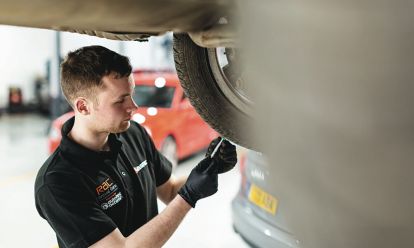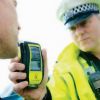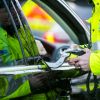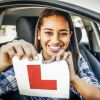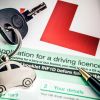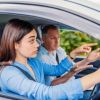However random they might seem, these characters tell us a lot about the types of vehicles we can drive and much more. That’s why we’ve decided to break it all down to help you better understand driving licence codes and driving licence categories.
Read on to help make sense of them all in this legal guide.
What are driving licence codes and categories?
The seemingly random letters and numbers on driving licences can be split into two groups:
- Driving licence categories given in letters or a combination of letters and numbers e.g. ‘C’ and ‘C1’. These tell us which vehicles we’re allowed to drive.
- Driving licence codes given in numbers only e.g. ‘01’ and ‘79(2)’. These tell us the conditions a driver should meet to drive. For example, ‘01’ is a common code indicating someone needs glasses or contact lenses to drive.
Find the full list of driving licence codes on the gov.uk website.
Driving licences explained
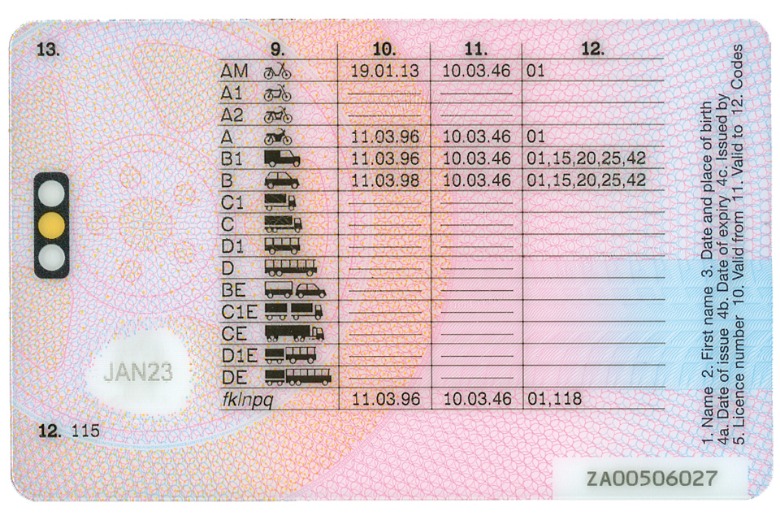
The easiest way to see which categories your licence covers is to look at section nine of your photocard.
Found on the front of the card, this section shows driving licence categories represented by letters separated by commas or slashes. Capital letters refer to categories recognised across Europe, while lower case letters refer to national categories.
On the back of your driving licence, you’ll notice a table with three columns:
- Column 9 shows types of vehicles you can drive
- Column 10 shows the licence start date
- Column 11 shows the licence end date
- Column 12 shows driving licence codes
What driving licence categories apply to cars?
B
Category B can mean one of two things depending on when you passed your test.
If you passed before 1 January 1997, you’re allowed to drive a vehicle and trailer combination with a maximum authorised mass (MAM) of 8,250kg. You can also drive a minibus with a trailer over 750kg MAM.
See categories D1 and D1E for more on minibus categories.
If you passed your test on or after 1 January 1997, you can drive vehicles up to 3,500kg MAM with up to 8 passenger seats and with a trailer up to 750kg. You can also tow heavier trailers if the total MAM of the vehicle and trailer is no more than 3,500kg.
Category B licences also allow you to drive motor tricycles with a power output higher than 15kW if you are over 21 years old.
B auto
This one’s simple, you can drive any of the vehicles included in Category B but only with an automatic transmission.
BE
The BE category currently appears on drivers’ licences if the holder has passed a car and trailer driving test. However, the DVLA hopes to change the law so this test isn’t needed and all new photocard licences will include the category.
Drivers who passed their test from 1 January 1997 face tighter towing restrictions until these rules change.
New rules were originally scheduled for 15 November 2021 and are likely to come into force in the near future. Keep an eye on the gov.uk website for more details.
B1
This category appears next to the image of a small van on the back of your licence. It means that you can drive a vehicle with ‘4 wheels up to 400kg unladen or 550kg if they’re designed for carrying goods.’
We’ve included it here as the code features on all licences when drivers have passed a standard test.

RAC sale – up to 33% off*
• Roadside cover from £5.29 a month†
• We get to most breakdowns in 60 mins or less
• Our patrols fix 4/5 breakdowns on the spot

What driving licence categories apply to vans and lorries?
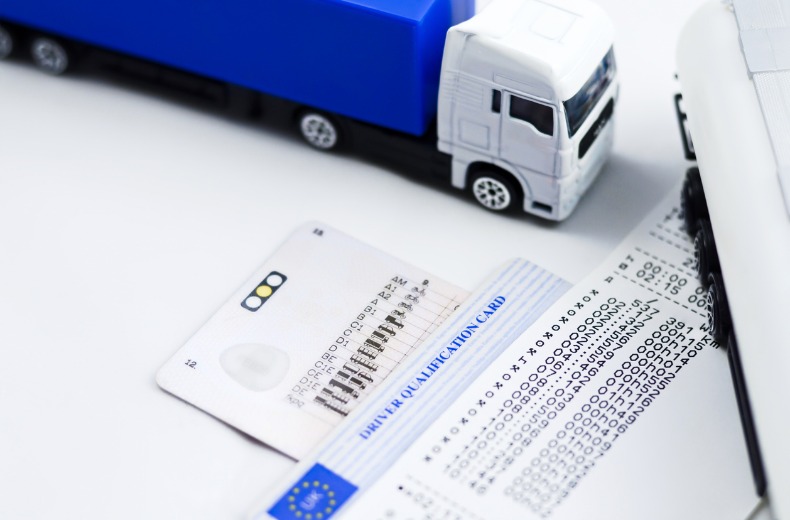
C
Category C refers to large goods vehicles, meaning you can drive anything over 3,500 kg (with a trailer up to 750kg MAM).
To get a Category C licence you’ll need a full car driving licence and to apply for a provisional lorry licence.
If your doctor decides you’re healthy enough to drive a larger vehicle, you can then take the four-part CPC (Driver Certificate of Professional Competence) test.
CE
Almost identical to Category C but you can also tow a trailer over 750kg.
C1
C1 is a little more restrictive than a Category C, as it only lets you drive vehicles between 3,500 and 7,500kg MAM (with a trailer up to 750kg).
C1E
Category C1E drivers can drive C1 vehicles with a trailer over 750kg. The combined weight of both cannot exceed 12,000kg.
What driving licence categories apply to motorbikes?
A
Holders of a Category A licence are allowed to drive any bike of any sized engine.
The licence is only available to riders aged 24 and over, or 21 and over if you’ve held an A2 licence for two years. You need to have completed your compulsory basic training (CBT) and passed a theory and practical test.
A1
Category A1 riders can drive light motorbikes with an engine up to 125cc and a power output up to 11kW. The category also allows riders to use motor tricycles with a power output up to 15kW.
Riders need to be 17 or over to take a test and must complete their compulsory basic training (CBT) and have passed a theory test and practical test.
A2
Category A2 is a step up from A1 and lets licence holders ride bikes up to 35kW. Bikes can’t be derived from a vehicle more than double its power and you need to be 19 years old to apply for a test.
AM
The AM category applies to mopeds rather than motorbikes. It allows a licence holder to drive two-wheeled or three-wheeled vehicles with a maximum speed of 28mph.
It also allows riders to use light quad bikes with the same max speed and unladen mass of 350kg (not including batteries if it’s an electric vehicle).
To get an AM licence you’ll need to be at least 16 years old, to have a valid CBT certificate and to pass the motorbike theory test and two-module practical test.
p
Another moped category, the letter p appears in italics and lower case on photocard licences to show that the holder can drive two-wheeled vehicles with a maximum design speed of over 28mph but no more than 31 mph.
Engines must be no more powerful than 50cc and the category appears on all standard full driving licences.
q
Category q lets licence holders drive two and three-wheeled vehicles without pedals if the engine size is no more than 50cc and the maximum design speed doesn’t exceed 15.5mph. The category also includes e-scooters.
- Motorbike breakdown cover
- Motorbike licence calculator - what bike can you ride?
- What are digital driving licences?
- RAC - our work for drivers
What other driving licence categories are there?
Other categories include:
- D - You can drive any bus with 8 passenger seats and a trailer up to 750kg.
- D1 - You can drive minibuses with no more than 16 passenger seats, a maximum length of 8 metres and a trailer up to 750kg.
- D1E - You can drive D1 minibuses with the option to tow a trailer over 750kg. The combined weight cannot exceed 12,000kg.
- f - agricultural tractors
- G - Road roller
- H - Tracked vehicles
- k - Mowing machine or pedestrian-controlled vehicles
- l - Electrically-propelled vehicles
- M - Trolley vehicles
- n - Exempt from duty
Front vs back of UK driving licence
The UK driving licence has two sides – front and back – with important information on both.
The front displays the licence holders’ personal details, such as name, date of birth, photograph, and signature.
It also includes the licence number, expiry date, and categories of vehicles they are allowed to drive on UK roads.
On the back of the licence, there is a more detailed section on the vehicle codes, categories and restrictions.
It also features the dates indicating when entitlement to drive each category begins and ends.
The photocard is a legally binding document, that is essential for drivers.
Eyesight correction code
On a driving licence, the eyesight correction code is 01 – and can be found on the rear side of the photocard.
This is one of the ‘restrictions’ that must be kept up to date.
Code 01 means that the driver must wear corrective lenses to drive – this can be glasses or contact lenses.
This is also the case for a provisional licence and corrective lenses must be worn during a test (if applicable).
By not wearing them, the driver could be liable for a fine, penalty points, or further prosecution.
There are subcodes for this that will appear on the driver’s record with the DVLA:
- 01.01 – Glasses
- 01.02– Contact lenses
- 01.06 – Glasses or contact lenses
All UK driving licence codes
Here is the complete list of driving licence codes found on UK driving licences:
- 01: eyesight correction, for example glasses or contact lenses
- 02: hearing/communication aid
- 10: modified transmission
- 15: modified clutch
- 20: modified braking systems
- 25: modified accelerator systems
- 30: combined braking and accelerator systems (for licences issued before 28 November 2016)
- 31: pedal adaptations and pedal safeguards
- 32: combined service brake and accelerator systems
- 33: combined service brake, accelerator and steering systems
- 35: modified control layouts
- 40: modified steering
- 42: modified rear-view mirror(s)
- 43: modified driving seats
- 44: modifications to motorbikes
- 44 (1): single operated brake
- 44 (2): adapted front wheel brake
- 44 (3): adapted rear wheel brake
- 44 (4): adapted accelerator
- 44 (5): (adjusted) manual transmission and manual clutch
- 44 (6): (adjusted) rear-view mirror(s)
- 44 (7): (adjusted) commands (such as direction indicators, braking light)
- 44 (8): seat height allowing the driver, in sitting position, to have two feet on the surface at the same time and balance the motorcycle during stopping and standing
- 44 (11): adapted foot rest
- 44 (12): adapted hand grip
- 45: motorbikes only with sidecar
- 46: tricycles only (for licences issued before 29 June 2014)
- 70: exchange of licence
- 71: duplicate of licence
- 78: restricted to vehicles with automatic transmission
- 79: restricted to vehicles in conformity with the specifications stated in brackets on your licence
- 79 (2): restricted to category AM vehicles of the 3-wheel or light quadricycle type
- 79 (3): restricted to tricycles
- 96: allowed to drive a vehicle and trailer where the trailer weighs at least 750kg, and the combined weight of the vehicle and trailer is between 3,500kg and 4,250kg
- 97: not allowed to drive category C1 vehicles which are required to have a tachograph fitted
- 101: not for hire or reward (that is, not to make a profit)
- 102: drawbar trailers only
- 103: subject to certificate of competence
- 105: vehicle not more than 5.5 metres long
- 106: restricted to vehicles with automatic transmissions
- 107: not more than 8,250 kilograms
- 108: subject to minimum age requirements
- 110: limited to transporting persons with restricted mobility
- 111: limited to 16 passenger seats
- 113: limited to 16 passenger seats except for automatics
- 114: with any special controls required for safe driving
- 115: organ donor
- 118: start date is for earliest entitlement
- 119: weight limit for vehicle does not apply
- 121: restricted to conditions specified in the Secretary of State’s notice
- 122: valid on successful completion: Basic Moped Training Course. This does not apply to trial e-scooters
- 125: tricycles only (for licences issued before 29 June 2014)
Source: gov.uk
Learner Driver Car Insurance
Only pay for the cover you need until you’ve passed your test. Get learner driver insurance so you can practice outside of your lessons.
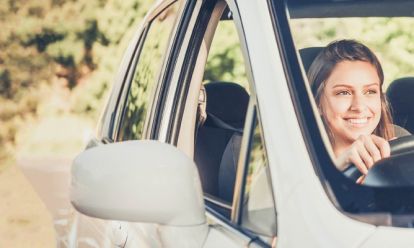

Driving licence codes FAQ
- Can I drive a van with my UK driving Licence?
In the UK, you can drive a van up to 3.5 tonnes if you have a standard car driving licence. Should you need to drive a van over this weight limit, then you will need to take additional tests.
- What's the biggest van you can drive on a car Licence UK?
The largest van you can drive on a normal driving licence is 3.5 tonnes / 3,500 kgs.
- How much does it cost to renew photo driving licence UK?
According to the Government, photocard licences are valid for 10 years unless otherwise stated. All drivers with a valid licence will receive a reminder to renew your photo before your current licence ends. You can renew your expired licence at a Post Office at a cost of £21.50.
- How long is a UK driving licence valid for?
A UK driving licence is valid for 10 years from date of issue. The expiry date will be on the rear of the card.
- Can I drive if my driving licence has expired?
In the UK, it is illegal to drive without a valid driving licence. If you get caught driving without one, you could face a £1,000 fine, legal action, as well as difficulties getting future car insurance.
- Where is the driving licence number?
The driving licence code can be found in section five on the front of the photocard. It is 16 characters long and includes the first five letters of the surname, followed by digits of the birth year, month, and day. Then then initials of first and middle names and the final three characters are computer generated for security.
- Where is the issue number of a driving licence?
The issue code follows immediately after the driving licence number on section five on the front of the card. It will say how many times you have had a new licence issued.
Service, repair or MOT?
You can trust the RAC with our local approved garages and NEW mobile mechanics.
